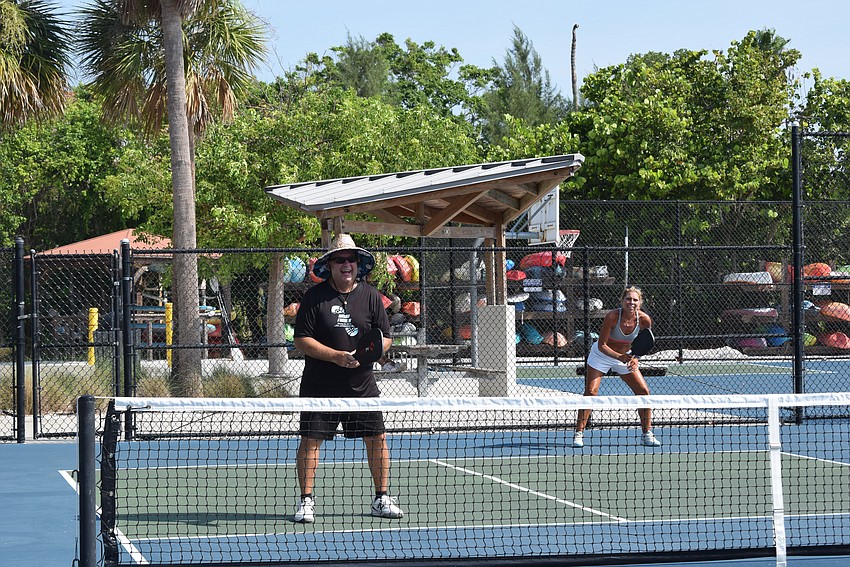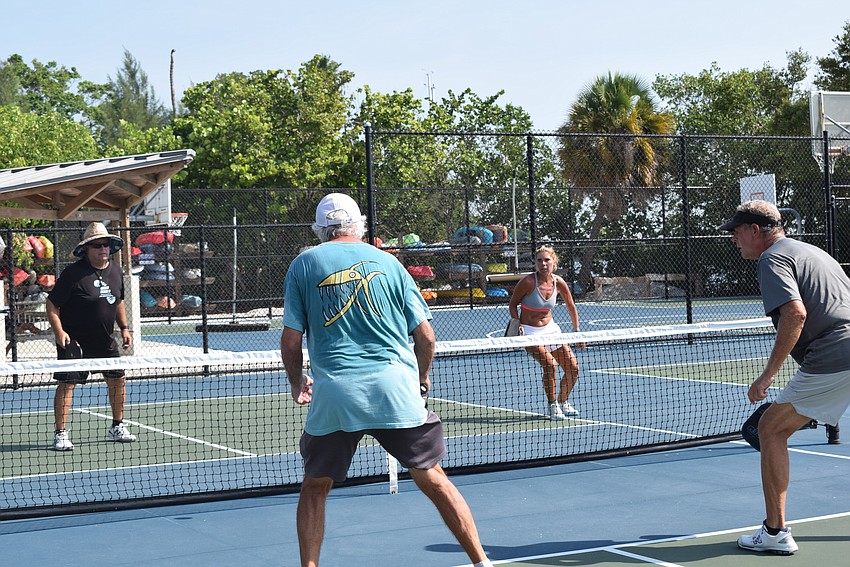- April 30, 2025
-
-
Loading

Loading

Put your sunscreen on and grab your paddles because there's no offseason for pickleball.
According to the Sports & Fitness Industry Association, there were more than 8.9 million people who played pickleball in the U.S. in 2022. As pickleball continues to grow in popularity, so does the number of injuries associated with playing it.
“We see a lot of calf strains and Achilles tendon injuries,” said Dr. Ken Kaufman, founder and clinic director of Sarasota Sports Medicine. “Also, there's oftentimes some hip problems because of the lateral movement, or the side movement that people are having to run to the side and shuffle to the side, they're not used to it, certainly if somebody is not conditioned, they're really not prepared for that type of motion.”
Kaufman explained that shoulder/rotator cuff injuries and tennis elbow injuries are common because people may not be familiar with properly gripping a paddle, especially one that is lighter than a tennis racket. In a June 20 news release about pickleball injuries, Kaufman also mentioned knee strains/tears, meniscus tears, PCL, ACL and MCL strains, hamstring strains, plantar fasciitis and ankle, wrist and foot sprains.

Brent Marshall, who has been playing pickleball recreationally for four years at Bayfront Park, said that it can be hard on the body when people start playing since it's a fast and intense game, “That's where I think you see a lot of injuries, is people coming off the couch that all of sudden (say), ‘Hey, I like this.’”
The best prevention for these injuries, according to Kaufman, is to get a personal trainer at a local fitness facility who can show the proper way to stretch and condition before, during and after playing pickleball.
“So it's different strengthening exercises, mobility exercises and learning ... basically preparing the body for the rigors of that activity,” said Kaufman. “So, training in a side-to-side plane, using bands and extra different tools to increase range of motion and increased flexibility and increased mobility are the best ways to prevent these types of injuries.”
Local pickleball instructor Julie Stewart shared that she has mastered a warmup to properly prepare the body before playing pickleball. She is also a rehabilitation therapist, owner of a nutrition company called Juice Plus, and the co-founder of the Sarasota Youth Pickleball League.

“The warmup design will not only physically get you prepared for the lesson, covering all muscle groups and moves that are pickleball-related moves. But it also helps you develop proprioceptive skills for on the court,” said Stewart.
Stewart explained it is important to have a fast-paced warmup that includes dynamic stretches over static. In her three-minute routine, she incorporates squats, paddle positioning to stretch the wrist, around-the-clock lunges and short sprints.
Other important factors that prevent injuries include staying hydrated, eating nutritious food, wearing sun protection and paying attention to your movements while playing. Stewart said it's important to shuffle instead of running backwards or cross-stepping. She also emphasizes the importance of wearing court shoes over running or heavy-cushioned shoes to avoid tripping and dragging your feet.

Kaufman said that it is important to seek medical advice if someone feels pain due to pickleball, “A lot of times somebody will rest for a while, the pain will go away, and they'll start again, and the pain will come right back. That means that there's something a little more involved than just a little overuse.”
Stewart, Marshall, and Kaufman all expressed their love for this fast-paced sport. They shared that it is a great way to get active, get outside and meet new friends, but they emphasized the importance of stretching, hydrating and eating right to stay safe and have fun.
Marshall said, “It is very addictive once you kind of get hooked on it.”